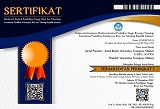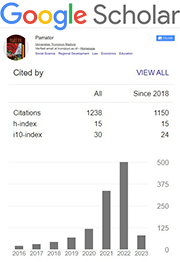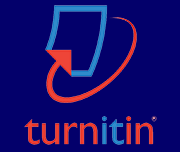Systematics Literature Review: Mathematics Reasoning in Elementary School
Abstract
Keywords
Full Text:
PDFReferences
Ahmad, G., Mandar, S. R., & Joko, S. (2021). Mathematical Reasoning Ability of Grade IV Elementary School Students on Polygon Materials. Thinking Skills and Creativity Journal, 4(2), 62–67.
Akuba, S. F., Purnamasari, D., & Firdaus, R. (2020). Pengaruh Kemampuan Penalaran, Efikasi Diri dan Kemampuan Memecahkan Masalah Terhadap Penguasaan Konsep Matematika. Jurnal Nasional Pendidikan Matematika (JNPM), 4(1), 44–60.
Andini, W. (2020). Pengembangan Desain Didaktis untuk Mengantisipasi Learning Obtacles Berpikir Aljabar di Sekolah. At-Tarbiyah: Jurnal Pendidikan, 30(2), 135–150.
Ardiansyah, Wahyuningrum, E., & Rumanta, M. (2022). Pengaruh Problem Based Learning terhadap Kemampuan Penalaran Matematik dan Korelasinya dengan Kemampuan Awal Siswa SMP . Mosharafa: Jurnal Pendidikan Matematika, 11(3), 483–494.
Benito, D. M. V. S., & Bailera, A. A. (2022). Working with Patterns Through Cess-Based Problems. Strategies and Reasoning Levels of Primary School Students. International Journal of Innovation in Science and Mathematics Education, 30(2), 14–28.
Cindyana, E. A., Alim, J. A., & Noviana, E. (2022). Pengaruh Pembelajaran Berdiferensiasi Berbantuan Materi Ajar Geometri RME Terhadap Kemampuan Penalaran Matematika Siswa Kelas 3 Sekolah Dasar. Jurnal PAJAR (Pendidikan Dan Pengajaran), 6(3), 1179–1187.
Febriyanto, B., Haryanti, Y. D., & Komalasari, O. (2018). Peningkatan Pemahaman Konsep Matematis Melalui Penggunaan Media Kantong Bergambar pada Materi Perkalian Bilangan di Kelas III Sekolah Dasar. Jurnal Ckarawala Pendas, 4, 32–44.
Habibah, H., Sutisnawati, A., & Amalia, A. R. (2021). Pengaruh Model Pembelajaran Open Ended terhadap Kemampuan Penalaran Matematika di Kelas Tinggi Sekolah Dasar. Attadih: Journal of Elementary Education, 5(2), 157–166.
Hafriani. (2021). Mengembangkan Kemampuan Dasar Matematika Siswa Berdasarkan NCTM Melalui Tugas Terstruktur dengan Menggunakan ICT. Jurnal Ilmiah Didaktika, 22(1), 63–80.
Holisin, I., Ainy, C., & Wikanta, W. (2019). Pengembangan Model Pembelajaran Oscar untuk Melatih Penalaran Siswa Sekolah Dasar dalam Menyelesaikan Masalah Matematika. Fibonacci: Jurnal Pendidikan Matematika dan Matematika, 5(1) 1–6.
Iskandar, R. S. F., & Juandi, D. (2022). Study Literature Review: Realistic Mathematics Education Learning on Students’ Mathematical Creative Thinking Ability. SJME (Supremum Journal of Mathematics Education), 6(1), 35–42.
Juandi, D., & Tamur, M. (2020). Pengantar Analisis Meta . UPI Press.
Kaplar, M., Radovic, S., Veljkovic, K., Muller, K. S., & Maric, M. (2022). The Influence of Interactive Learning Materials on Solving Tasks That Require Different Types of Mathematical Reasoning. International Journal of Science and Mathematics Education , 20, 411–433.
Kemendikbud. (2020). Peta Jalan Pendidikan Indonesia (2020-2035) (p. 19).
Latifah, S. S., & Luritawaty, I. P. (2020). Think Pair Share sebagai Model Pembelajaran Kooperatif untuk Peningkatan Kemampuan Pemecahan Masalah Matematika. Mosharafa: Jurnal Pendidikan Matematika, 9(1), 35–46.
Marasabessy, R., & Hasanah, A. (2021). Penalaran Matematika: Apa Aspek Sentralnya? Jurnal Cendekia: Jurnal Pendidikan Matematika, 5(1), 562–577.
Meirisa, A., Fauzan, A., Syarifuddin, H., & Fitria, Y. (2021). Analisis Kemampuan Penalaran Numerik Siswa dalam Menyelesaikan Soal Berbasis Mathematical Cognition di Sekolah Dasar. Jurnal Basicedu, 5(4), 2678–2684.
Mustamin, St. H. (2018). Penggunaan Alat Peraga dalam Mengatasi Kesulitan Belajar Matematika Materi Pecahan pada Siswa Kelas V. AULADUNA: Jurnal Pendidikan Dasar Islam, 5(2), 170–182.
Nanang, & Sukandar, A. (2020). Meningkatkan Kemampuan Siswa SDIT Miftahul Ulum Pada Operasi Bilangan Bulat Melalui CAI-Contextual . Mosharafa: Jurnal Pendidikan Matematika , 9(1), 71–82.
Nining. (2019). Penerapan Model Creative Problem Solving untuk Meningkatkan Penalaran Matematika. Pedagogik, 7(1), 32–41.
Nourmaningtyas, H. P., Joko Sulianto, & Damayani, A. T. (2020). Pengembangan Bahan Ajar Berbasis Pendekatan Open Ended Pada Materi Pengukuran Panjang dan Berat untuk Meningkatkan Kemampuan Penalaran Siswa Kelas IV di SDN Bugangan 03 Semarang. Elementary School, 77–86.
Nuraeni, N., Nahdi, D. S., & Cahyaningsih, U. (2019). Implementasi Model Pembelajaran Predict-Observe-Explain (POE) dalam Meningkatkan Kemampuan Penalaran Matematika Siswa Sekolah Dasar. Jurnal Educatio FKIP UNMA, 5(1), 1–11.
Obara, S. (2019). Pre-service Teachers Exploring the Role of Pattern-based Reasoning in the Context of Algebraic Thinking. EURASIA Journal of Mathematics, Science and Technology Education, 15(11), 1–16.
Olteanu, C. (2022). Programming, mathematical reasoning and sensemaking. International Journal of Mathematical Education in Science and Technology, 53(8), 2046–2064.
Rachmaningtyas, N. A., Jailani, & Fitriyani, H. (2020). Classification of Mathematical Reasoning Competencies based on Mathematical Problem Solving in Elementary School. Journal of Applied Physics, 2268(1), 1–6.
Rimadona, P., Fitriani, A. D., & Robandy, B. (2018). Penerapan Pendekatan Realistic Mathematics Education (RME) untuk Meningkatkan Penalaran Matematika Siswa Kelas IV Sekolah Dasar. Jurnal Pendidikan Guru Sekolah Dasar, 3(1), 54–63.
Riyanto, Y., & Oktariyanda, T. A. (2023). Metodologi Penelitian Kualitatif dan Kuantitatif. Unesa University Press.
Rosdiana, Budayasa, I. K., & Lukito, A. (2021). Pre-service elementary school teachers’ reasoning profile in solving geometry problems based on mathematics ability. Journal of Physics, 1752(1), 1–5.
Sakhiyah, F., Rijal, R., & Mansur. (2019). Efektivitas Penerapan Model Connecting, Organizing, Reflecting, Extending (CORE) terhadap Kemampuan Penalaran Adaptif Matematika. Ibdida’i, 6(2), 149–164.
Saleh, M., Prahmana, R. C. I. P., Isa, M., & Murni. (2018). Improving the Reasoning Ability of Elementary School Student Through the Indonesian Realistic Mathematics Education. Kournal on Mathematics Education, 9(1), 41–54.
SetIawan, B., & Dores, O. J. (2019). Analisis Kemampuan Pemecahan Masalah dan Penalaran Matematika Siswa Sekolah Dasar se Kota Sintang. VOX EDUKASI: Jurnal Ilmiah Ilmu Pendidikan, 10(1), 137–143.
Silva, S. de O. A., & Luna, S. V. de. (2019). Correlacao entre o Raciocinio Logico e o Raciocinio Matematico em Criancas Escolanrizadas. Bolema, Rio Claro, 33(65), 1047–1066.
Triandini, E., Jayanatha, S., Indrawan, A., Putra, G. W., & Iswara, B. (2019). Metode Systematic Literature Review untuk Identifikasi Platform dan Metode Pengembangan Sistem Informasi di Indonesia. Indonesian Journal of Information Systems (IJIS), 1(2), 63–77.
Wahyuni, I. (2022). Penalaran Proporsional. Lembaga Ladang Kata.
Yohanes, B., Darmawan, P., & Nugroho, P. B. (2023). Penalaran Induktif Siswa Sekolah Dasar dalam Menyelesaikan Masalah Keterbagian Bilangan Bulat. SIGMA, 8(2), 84–93.
DOI: https://doi.org/10.21107/pamator.v16i4.22626
Refbacks
- There are currently no refbacks.
Copyright (c) 2023 Atika Maulidina Hs, Wiryanto Wiryanto, Neni Mariana

This work is licensed under a Creative Commons Attribution-ShareAlike 4.0 International License.
Jurnal Pamator : Jurnal Ilmiah Universitas Trunojoyo by Universitas Trunojoyo Madura is licensed under a Creative Commons Attribution-ShareAlike 4.0 International License.















.png)